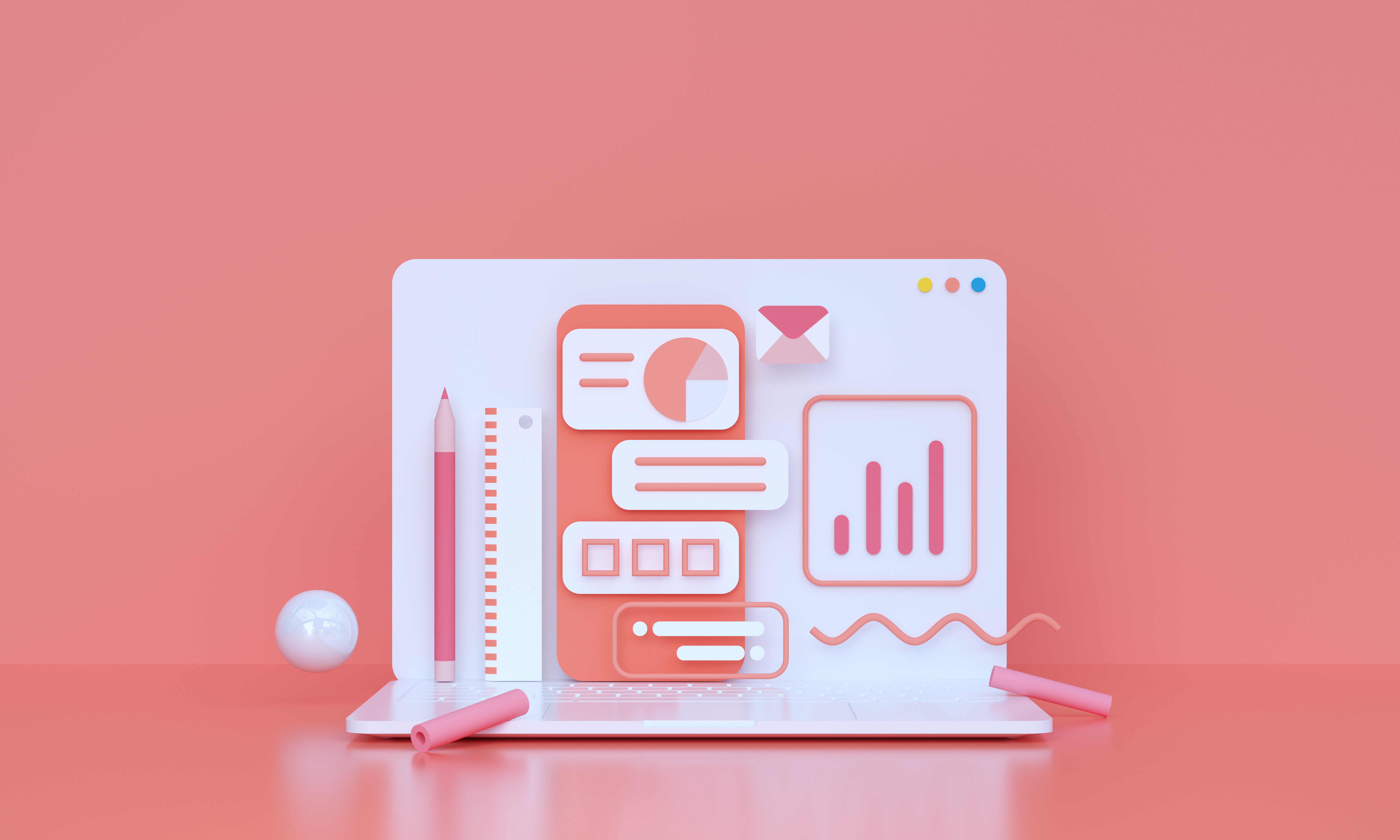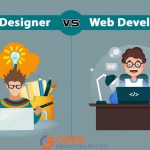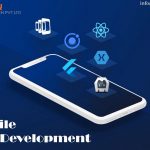
With over 1.7 billion active websites, how can you diversify your online business? The competition for user attention has reached a very high level. All pixel and millisecond stories determine whether you are attracting your web and mobile visitors or placing them.
Research shows that design is a leading web browser and leading mobile users. Visual appeal and ease of use play a very important role in the involvement of visitors and digital products. With this in mind, the work of Web Designers is essential for a successful online presence, as it helps users achieve their goals.
To help UI and UX designers stay on top of things, today, we will take a look at the emerging user interface and experience style that will run from 2021. But first, let’s settle the matter once and for all.
UX Vs UI – Are They the Same?
Although UX and UI are not entirely new concepts, most people are not clear about the differences between them. Both of these designs are user-friendly and work together to affect user visibility with a software product for sure. However, there is a fine line between the two.
In short, UX makes your web and mobile connectors useful and accurate, and the UI makes them great.
The work of UX developers focuses on the strategic, conceptual aspects of the software product, while the UI designers take care of tangible, exclusive use.
What is the User Interface (UI) Design?
The UI, or user interface, lies at the intersection of human interactions with computers and communications, which are responsible for what all screen elements and touch screens and structures look like.
The UI belongs to the UX, and is a small name. It works directly on the visual side of user interaction with digital systems and is concerned with the construction of UI objects such as buttons, menus, checkboxes, forms, CTAs, and images, and the use of typography, color schemes, lines, hues, and shadows. The UI look is not only based on the aesthetic design judgment; it should also comply with the UX designers’ recommendations for an easy-to-use, consistent and attractive product.
What is User Experience (UX) Design?
UX represents user information and includes all aspects of end-user communication with a website, application, or software. The great UX aims to solve the problems of end-users in a very efficient and seamless way.
UX designers are responsible for delivering valuable, accurate experiences to end-users and directing them well towards achieving their goals. Their work affects the overall idea of the program and how the company delivers to the user’s expectations.
Some UX and UI Trends to Follow IN 2021
Now that we’ve covered the critical differences between UX and UI, let’s cut to the chase and see what cries out in the UX and UI design world this year. Some of the trends like artistic typography are continuations of tendencies we could already experience last year. Some have appeared recently, and are expected to be GREAT in the next few months.
- Custom 3D/Realistic Graphics and Animations
The integration of three-dimensional designs into web and mobile interfaces has seen explosive growth in recent months, and understandably so. using 3D graphics and animations on your website and apps brings to life central objects and makes it possible for users to understand the core concepts quickly. To catch users’ interest and infuse brand personality, UX and UI experts embed custom 3D components in UI designs. With memorable interactions, dynamic, making webpages, and app screens even more irresistible, complex animations evoke user participation. - Augmented Reality Mobile Apps
The Augmented Reality is not new to mobile design, but 2021 creates great potential for new AR applications, as global revenue for AR-enabled applications is expected to double this year to exceed $ 6.2 billion.
The unpopular reality of taxpayers we see pushing the boundaries of the UX mobile design with user-friendly food for first-person, diving projects. As it removes all visible barriers to real user engagement, it completely revives the way people interact with products. The integration of innovative building materials into the physical world, allows users to engage more deeply with products and services than just learning about them. The more real-life experience demonstrates the power of e-commerce, retail, educational, real estate, entertainment, and communications companies, using you in services such as virtual reality, advanced home stage and improvements, collaborative learning, simulated gaming experiences, and more. - Minimalist Full-screen Backgrounds
Here are some of the most up-to-date design trends this year. It leaves the traditional UI layout that puts all the meaningful content in the middle of the page and places you with the full-screen experience. This approach makes extensive use of screen space to create a visual and emotional look, to clearly articulate the goal of a web page, and to encourage continuous exploration.
Through vitality, full-screen backgrounds click on beauty and integrity in architecture, especially in the interests of premium and luxury products. However, don’t be fooled by the small appearance; designing a full-featured, highly flexible interface that uses attractive views is easier said than done, and requires advanced UI and UX design skills. - Rapid Cross-platform Design
With digital content to be presented as a website and mobile app, there is no better choice than speaker development. It uses continuous frameworks and libraries such as React Native to bring visual user interface to mobile, web, and desktop screens from a single code base. By re-using code to support multiple devices, platform development greatly reduces the time and investment required to run an application or website. It also ensures design consistency, while maintaining the traditional look and feel, and requires minimal design effort. In this way, UX and UI designers work with multiple device support from scratch, and later adapt their creations to individual platforms. All of this efficiency makes cross-platform design one of the leading approaches to web development and development. - Rebellious Asymmetry and “Broken” Layouts
While most of us enjoy symmetry and decor, in reality, we are surrounded by asymmetrical design. Why not use it in UX architecture?
Depending on the design techniques, asymmetry on the web and in the mobile interface can be used to establish balance and harmony or for the purpose of creating a sense of confusion and randomness. In this first we approach, the asymmetrical UX and UI design make extensive use of split screens, whitespace, clear lines, and different color schemes. When used for irritation and distraction, it relies on unusual structures, scattered structures, inconsistent color choices, and seemingly random objects. Either way, well-designed asymmetries always organize content differently so that the eyes of visitors follow and push the boundaries of the idea of helping brands rise above the crowd with an extraordinary experience. - Rule-breaking Typography
Web and mobile designers have always recognized the importance of typing, and each year it brings new styles related to font types and sizes, their brightness, and their layout on the website.
By 2021, typography goes wild with amazing jumbo fonts that scatter images (or alter them completely), penetrate the center, or spill off the screen. Recent construction styles prioritize size and quality over quantity, which shows greater concern for the meaning of words, rather than their number. This year, we will also see UX and UI designers using a variety of fonts (serifs are back!), Different colors, and text spread. All of these strategies are aimed at building a strong visual spectrum and creating an appeal that keeps visitors moving forward. - Breath-taking Microinteractions
We have already said that cartoons will continue to rise in popularity this year. The same goes for small interactions, which take users a step further, to fill the visual understanding that is closest to the sensitivity involved.
By adding movement to buttons, thumbnails, tabs, screenshots, visual cues, menus, and other UI items, you can revitalize your website or app and activate user feedback very quickly, without much investment. Small interactions provide a great boost to the user experience, as it enhances interaction, keeps users engaged, and provides feedback and instructions. Other common examples of small GUI interactions that can enable your interfaces to include switching flexibility, progress bar animation, and data integration. However, modern technology allows you to live almost everything. The sky is the limit!
Worried about UX/UI Design?
Great designers are always thinking ahead, breaking the rules, and using creativity inefficient use to create a mesmerizing user experience that translates into a great product presentation with a healthy bottom line. In order to do that, they keep tabs on modern events that delight and amaze their clients.
If you are late, we can bring it to you immediately. We help you to leverage the power of intuitive UI & UX Designs by creating and strengthening brands with meaningful designs for Website Design, mobile app design, admin dashboard designs, etc.
OGEN Infosystem is one of the best UI/UX designing, brand identity designing, and website designing company in India that emphasizes originality and quality. we are a team of creative thinkers who works together and put our experience into an excellent and result-driven website.
Need Help?
For any issues you can send us an email at store@ogeninfo.com also let us know if you want to discuss your WordPress project, you can ping us anytime at ogeninfosystem@gmail.com














